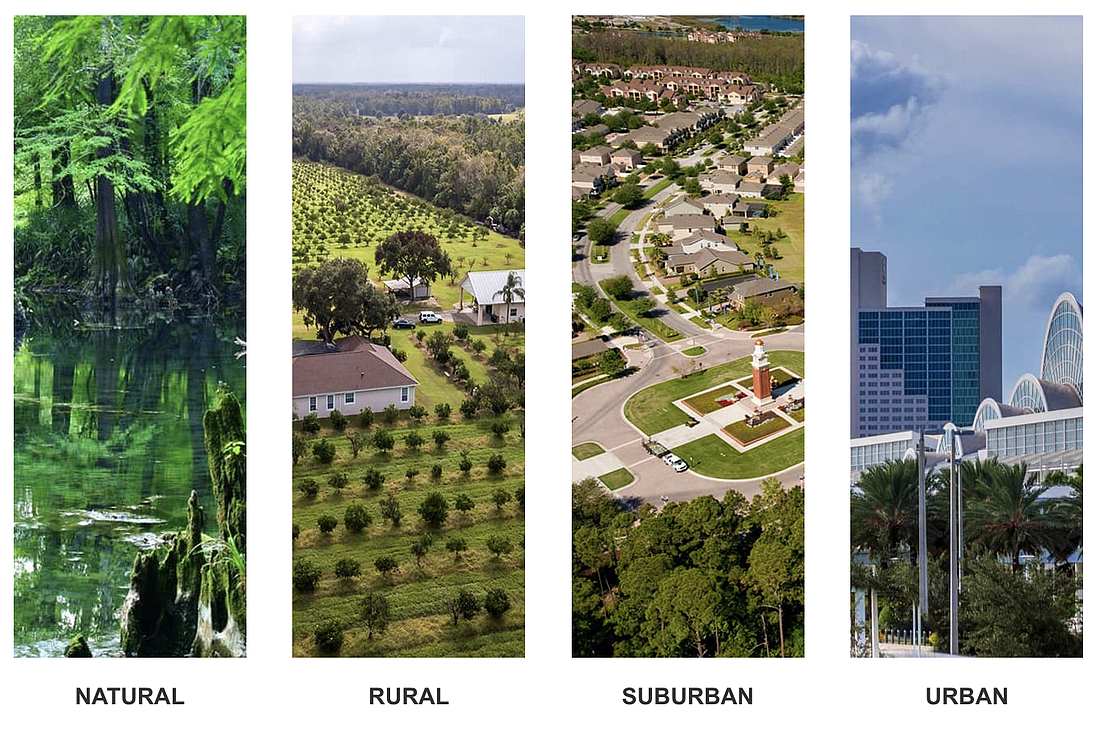- March 29, 2025
-
-
Loading

Loading

Orange County Government has begun its series of town hall meetings on Vision 2050, the proposed framework for sustainably managing the next three decades of growth in the county. These meetings will be held throughout Orange. The first was hosted by Orange County District 1 Commissioner Nicole Wilson Tuesday, May 9, and the discussion was pertinent to this district.
The interactive meeting, held at the Korean Presbyterian Church in Winter Garden, was set up with multiple stations and departments where residents could learn about the goals and objectives and the program and could give input and ask questions.
“Vision 2050 is the blueprint; it’s not code,” Wilson said. “It’s difficult to come up with an analogy for the layers of governing documents, but if you think of Vision 2050, it’s our vision, it’s a blueprint. It’s sort of the body of the car, and the code is the engine. Understanding that, we need to have that good blueprint, we need to have that good body. It needs to be stable, it needs to be functional, and it certainly needs to speak to the needs and interests of all of our residents.”
Orange County is projected to add nearly 700,000 new residents by 2050. Staff and stakeholders have been working on a plan to lead the county toward a future vision rather than reacting to existing conditions.
Called Vision 2050, this initiative aims to guide how and where growth will occur over the next two-and-one-half decades. Vision 2050 will be implemented through the adoption of a new land-development code called Orange Code, which will focus on placemaking standards and context-based regulations.
As a type of form-based code, Orange Code will rely on developmental characteristics that are desired rather than those that communities seek to avoid. These plans act as blueprints for guiding short- and long-range development, resource protection, provision of public services and economic growth.
“Orange County continues to grow, and we can’t stop that, so we might as well start planning,” said Alberto Vargas, county planning manager. “We’re taking a document that was created by the Board of County Commissioners more than 30 years ago, reorganizing it and updating it.”
The county is first divided into six market areas — West Orange County falls in the southwest market area. Each market is further subdivided sectors and place types. Sectors direct growth to where it’s encouraged, and place types direct the character of future growth.
“(That) formula of both a vision document that is predictable and a code that implements what’s in that document (is) the formula for success,” Vargas said. “The land development code is more than 66 years old. We have been incrementally, over time, amending it and patching it.”
HOW IT WORKS
Vargas said the county is looking at a more place-based formula that relies on the required elements that make up 10 chapters: Land use, mobility and neighborhoods; housing and community services; tourism, arts and culture; economy, technology and innovation; natural resources and conservation; recreation and open space; transportation; public schools; community facilities and services; and implementation and property rights.
Market areas are broken down into Northwest, Southwest, Core, East, South and Rural East. These describe the general character of geographical areas within the county. They inform and influence the structure of subsequent planning layers.
Sectors are labeled Targeted, Intended, Established, Rural, Preserved and Special. They are associated with specific long-range strategies that indicate whether an area should develop, redevelop or stay largely unchanged within the expected 30-year planning horizon.
Place types are Centers, Neighbors and Corridors and define existing and future planning areas, including appropriate development densities and intensities.
Within these place types are further breakdowns. In Centers, there would be a regional center, tourist activity center, urban center, urban core, neighborhood center and rural center. In Corridors, there would be urban, main street and suburban corridors; and in Neighborhoods, there would be traditional, suburban mixed, suburban and rural.
“We begin to geographically define that we have six different market areas, …we have six different sectors and the place types is just another way to define future land uses,” Vargas said. “The only difference is we’re not talking about commercial, industrial, residential in isolation anymore — but in places that make sense and are suitable for the integration of those uses whether it’s vertically integrated or horizontally integrated.”
Some residents were pleased to hear stipulations would remain for the 21 rural settlements, including Lake Avalon.
“We recognize Orange County’s diversity of people and places in planning for the future to ensure that growth and development occur in a resilient, sustainable, equitable and inclusive manner that will present the natural resources (and) established neighborhoods and create vibrant communities that are attractive to residents, businesses and visitors alike,” reads the Vision 2050 mission statement.
Florida Law requires local jurisdictions to implement comprehensive plans to manage growth and guide public investment. Since 1972 this legal framework has defined growth management and shaped development patterns throughout the state. However, best practices in planning have changed significantly during recent decades, providing new opportunities for local policies and regulations to evolve accordingly and meet the needs of the 21st century.
Vision 2050 will restructure the Orange County Comprehensive Plan, reorganizing policies with focus on resiliency, placemaking, affordability, context-driven planning and performance-based development.